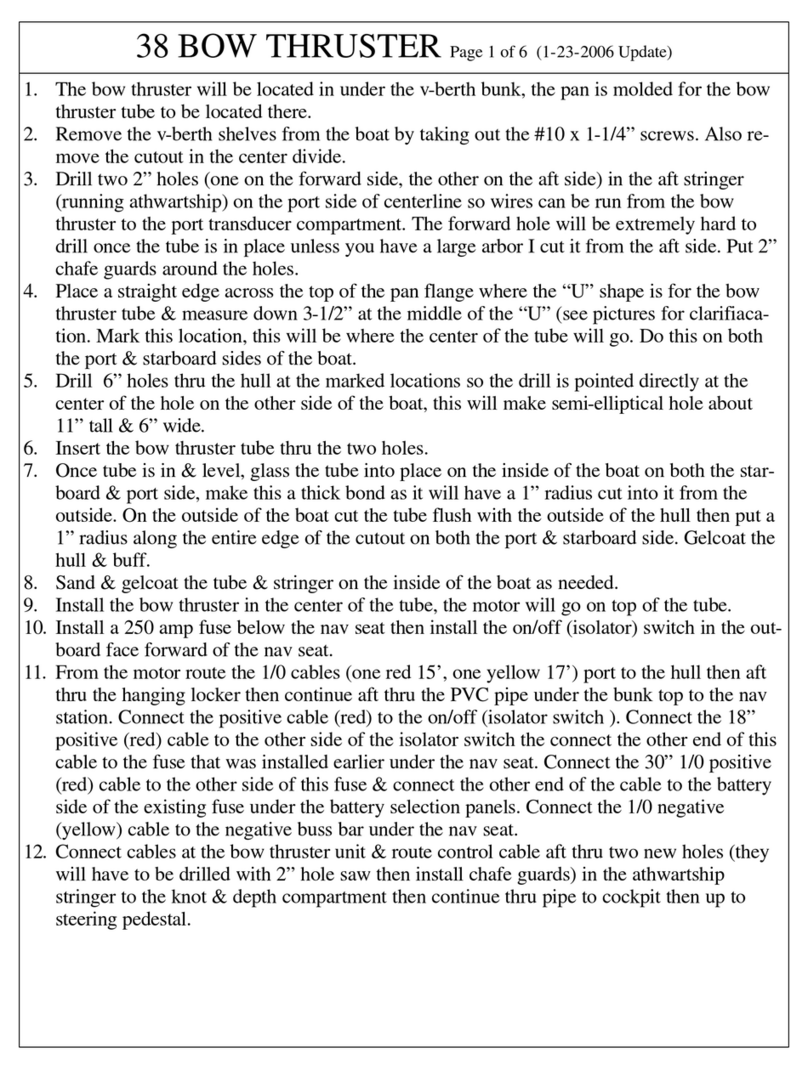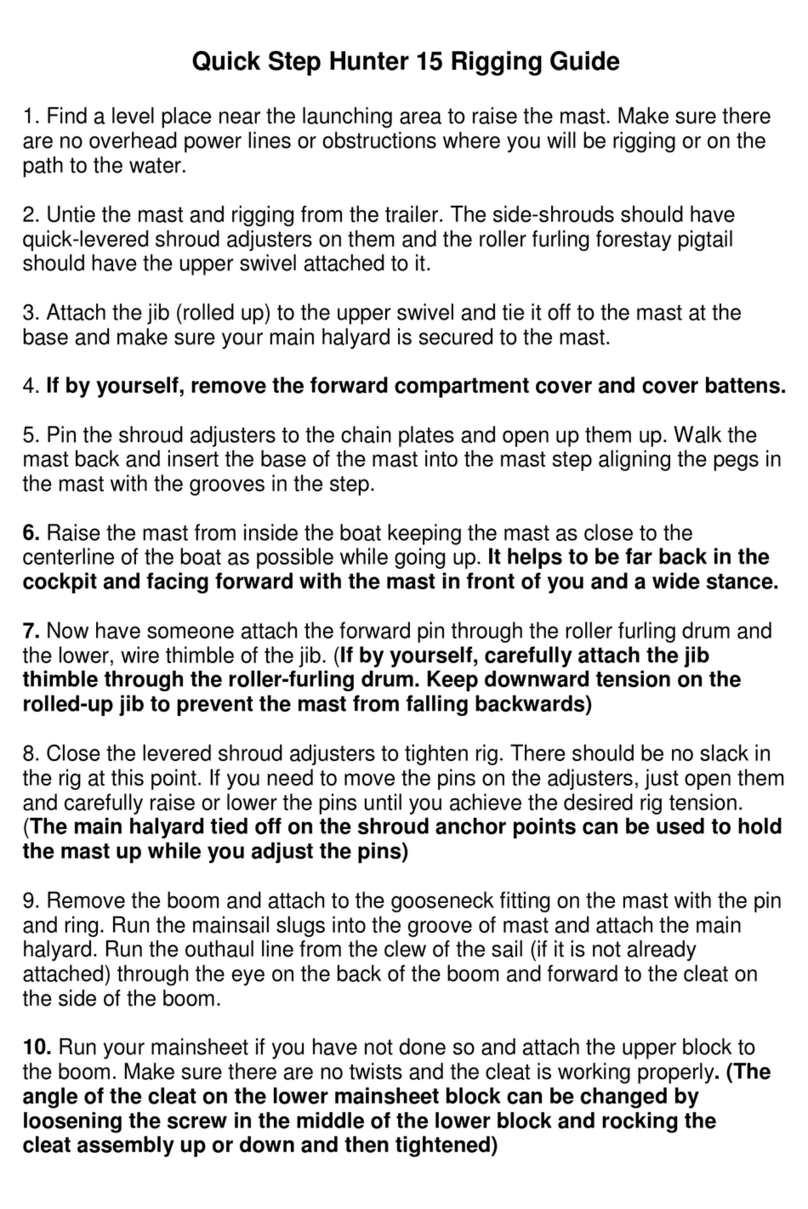
Hunter 15 • Introduction
1.4
Yachtsman Handbook
by Tom Bottomly
Motor Yacht and Sailing
P.O. Box 2319, FDR Station
New York, NY 10002
The Complete Book of Maintenance and Repair
by Dave Kendall
Doubleday and Co.
Garden City, NY 11530
Pleasure Yachting and Seamanship
U.S. Coast Guard Auxiliary
306 Wilson Road Oaklands
Newark, DE 19711
1.5 Equipment Manufacturer Manuals
Marlow-Hunter purchased various equipment and com-
ponents from other manufacturers and installed them on
your boat while it was being built. Examples include the
engines, pumps, and the generator. Most OEMs (Original
Equipment Manufacturers) have provided operation and
maintenance manuals for your boat’s equipment. Keep
OEM manuals with your Hunter Operator's Manual in a
safe and accessible place. Be sure to pass them along
to the new owner if you sell your boat.
NOTE: The OEM manuals take precedence over the
Hunter Operator's Manual. If information in the Hunter
Operator's Manual differs from that in the OEM manuals,
follow the information in the OEM manuals.
1.6 Warranties
Nearly all OEM equipment has its own limited warran-
ties. Warranty registration cards are in your Operator’s
packet.
Locate and read the individual warranties; put them
together for easy, future reference.
For international owner's; your warranty can be found in
your CE compliant Owner's Manual.
For U.S. and non-EU compliant countries, your warranty
info can be found in the Warranty section, chapter 3 of
the Operator's Manual.
1.7 Hull Identification Number (HIN)
The "Hull Identification Number" located on the starboard
aft side, is the most important identifying factor, and must
be included in all correspondence and orders. Failure
to include it creates delays. Also of vital importance are
the engine serial numbers and part numbers when writ-
ing about or ordering parts for your engine. Refer to the
engine manufacturers manuals for locations of engine
serial numbers, and record them for future reference.
US-HUNPCXXXDXXX
Hull Number format:
“US” - country origin, “HUN” - Manufacturer, “C” - length
code, “XXX” - hull number, “D” - month code, “X” - year
code, “XX” - model year
1.8 Manufacturers Certifications
As a boat manufacturer, Marlow-Hunter builds their
products to guidelines established under the Federal
Boat Safety Act of 1971. The act is promulgated by
the U.S. Coast Guard who has authority to enforce
these laws on boat manufacturers that sell prod-
ucts in the United States. Marlow-Hunter ensures
that all of it's products comply with these laws.
The NMMA, National Marine Manufacturers Association,
provides Marlow-Hunter with a third party certification.
The NMMA is an organization that represents the marine
industry and assists manufacturers, boat dealers, marinas,
repair yards and component suppliers in areas of legisla-
tion, environmental concerns, marine business growth,
and state and federal government agency interaction.
The third party certification that Marlow-Hunter partici-
pates in, uses well known Standards and Recommended
Practices of the ABYC, American Boat and Safety Council.
We at Marlow-Hunter participate extensively in the
ABYC, which is all non-profit, and develops and pub-
lishes voluntary standards and recommended prac-
tices for boat and equipment design, construc-
tion, service and repair. We utilize all applicable
ABYC standards in the construction of Hunter boats.
Finally Marlow-Hunter sells their products worldwide, and
as such must conform to the various rules and regula-
tions required by other countries. Most notably are the
ISO standards in Europe which require the application
































